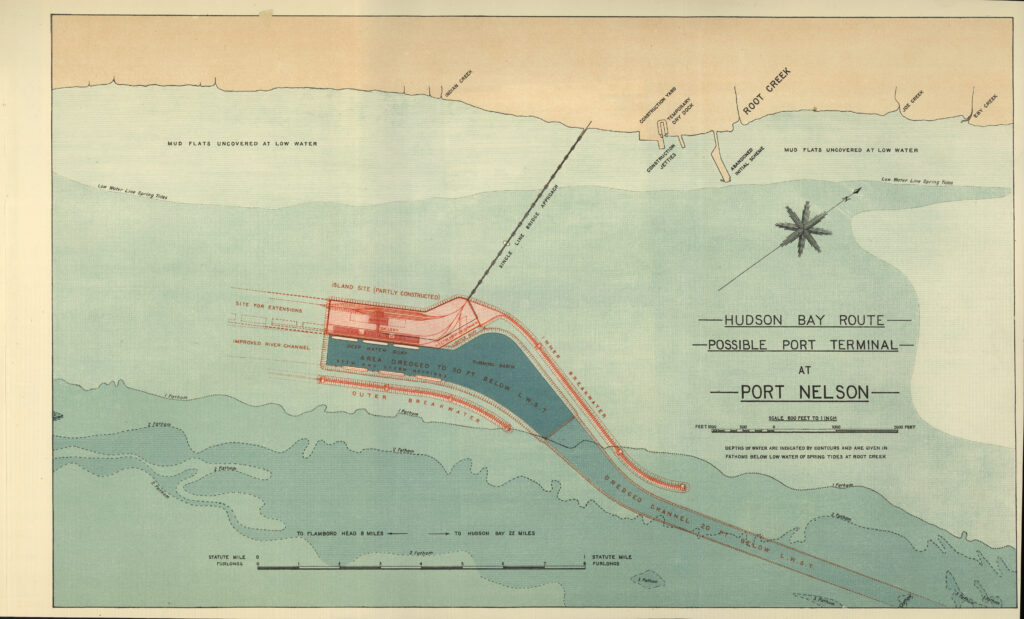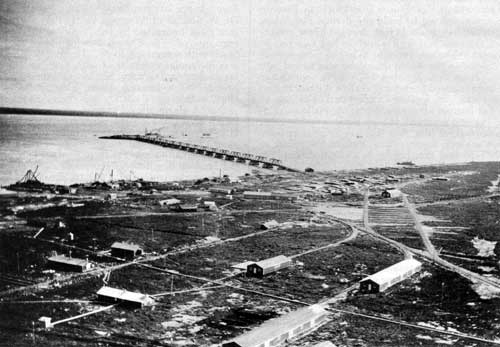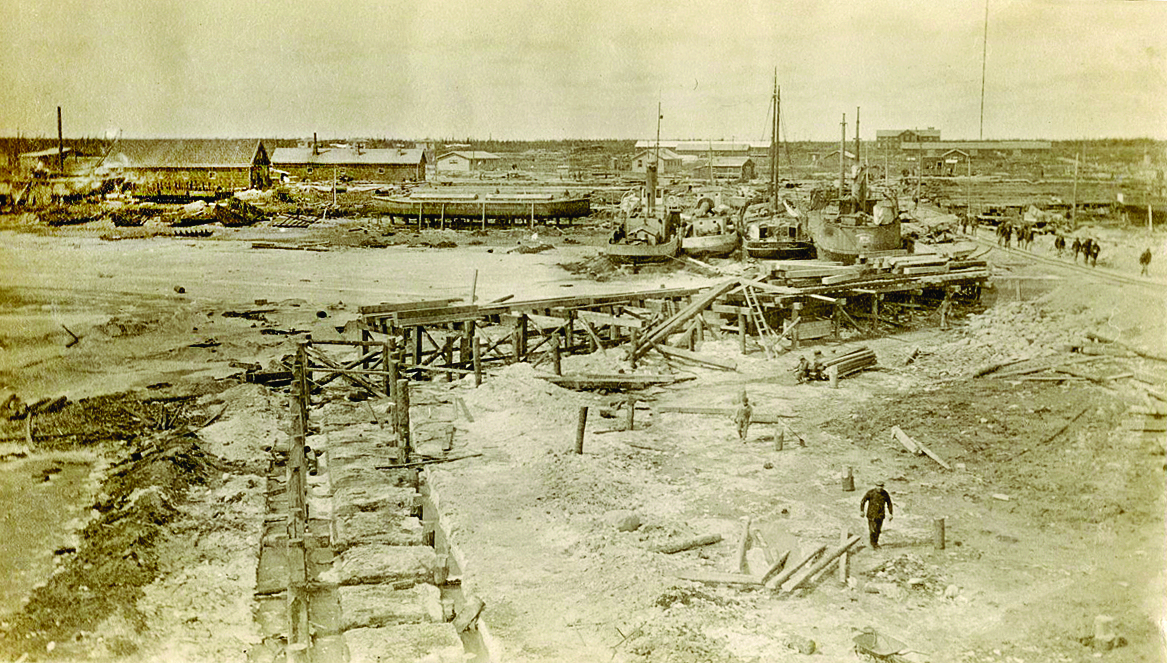
Issues in the News
The last thought in President Biden’s speech when he came to Canada in March was the fact that we and the United States are the Lands of Possibility. That, I think, is the best word to describe Manitoba so I am dedicating this page to that thought and to all the Possibilities that we can realize here in our city and province under an open-minded government.
I did not pick these possibilities out of a hat. They are all things that have been in the works for many years. Four of these big moves involve transportation as is appropriate for our province that is in the centre of North America and should be a continental hub for the movement of goods and people. I have written about them all at one time or another and there are people out there working to make them come true. All it takes is political will and determination to resist the naysayers, overcome the technical barricades created often by governments themselves, and to proceed with the optimism that built our great province.

1. NeeStaNan Railway and a second Port on Hudson Bay. Back in 1913, work began on a railway and port facility at the mouth of the Nelson River. In 1920, the line was rerouted to Churchill because it was an easier build despite the problems with discontinuous permafrost and early freeze-up of the fresh water at this location. Port Nelson was abandoned. Now, more than 100 years later, the advantages of Port Nelson are being understood in the modern world. First, the rail line extends along a stable, hard-bed esker ridge that can bear heavy loads at speed all year long. Secondly, the bay here is salt water so does not freeze solid and would therefore be accessible year-round for modern icebreakers. Third, the shallowness of the bay can be mitigated with modern equipment that could suck up the silt as a slurry and deliver it to shore. And finally, modern methods of offshore freighter loading are used in the Eurasian Arctic that could be employed here. This port would be useable 12 months a year, would reduce shipping times through the St. Lawrence to Europe at least one day (with no wait times and backlogs). It would increase traffic on the One North Churchill line from the Pas to Amery, where it would split off to Port Nelson, avoiding the wobbly, swampy bed from there to Churchill. This line would be owned by the First Nations of the area. It would change the face of Canada, serving the Prairie provinces and perhaps even the Ontario Ring of Fire. In April the three provincial transportation ministers signed an MOU endorsing this concept. Stay tuned.
2. A modern Port of Entry at Emerson. The Emerson Border Crossing, open 24 hours, is one of the busiest in Canada and the busiest on the prairies for commercial traffic. Things move pretty smoothy for entry into Canada, but south bound traffic can be problem. Any artificial delay and trucks could be lined up for miles to clear Customs. The border crossing should be modernized on the Canadian side with automated entry for commercial vehicles. A duty-free hub with the same advantages afforded to the Winnipeg International Airport and Centre Port is part of the plan. An entry fee for commercial vehicles entering Canada (truckers pay a fee to enter the US) could be levied to support the upgrade costs. This plan has been on the books for two decades and is supported by the municipality of Emerson, the Emerson Duty-Free Shop and most recently, the local First nations. Serious upgrades to Highway 75 have already been committed by Transportation Minister Doyle Piwniuk, who is looking at the Emerson proposal.

3. Airship for transport to the North and far North. Dr. Barry Prentice of the University of Manitoba has been working on this proposal for three decades. It focusses on the efficacy of using lighter than air ships to transport goods and people to remote communities at a much lower cost and less environmental impact than current technology. But we are losing our edge. France has invested $30 million in a local French company, Flying Whales, that has since raised 300 million Euros to towards bringing these ships into production. And Quebec has acquired almost 25% of the shares, the rest being owned by an industrial consortium of some 40 French and Canadian aeronautical companies. Manitoba appears to be on the sidelines but there is still time to get into the act, and support our local genius behind the plan so we can service the far north.
4. Removing the railway lines from the centre of Winnipeg. Our city remains one of the last Canadian railway cities to still host those noisy beasts running through the heart of town. A derailment of 12 cars on the McPhillips overpass the second week in April 2023, has rekindled the discussion about what it would take to move the lines outside the city. Currently, more than 7,300 kilometers of rail lines criss-cross the city, accommodating some 50 trains a day. They run through Winnipeg at all hours and hold up traffic at 230 grade crossings. On hot summer days, sparks from their wheels set off fires on the right of way and potential derailment is a constant threat. It would cost several billion dollars to move the lines but that would also free up thousands of acres of inner city and prime land for redevelopment, increasing the tax base and improving the overall beauty and livability of Winnipeg. Cities that have done this over the past few decades have all realized a net benefit. It is well past time to get serious and start the ball rolling toward removal of the Ines.

5. Modular housing for the homeless. We cannot continue to tolerate the state of homelessness that exists in the city of Winnipeg and is spreading to rural towns. In November 2022, a group of 22 tiny houses were unveiled at a site just off Main Street. The problem is the cost. At an astronomical $5.8 million and counting, this is not the doorway to the end of homelessness as promised. At $240,000-plus per home, it is just too expensive. And these are very tiny – between 100 and, for the handicapped, 400 square feet. There are alternatives in both size and cost, however. One such is a company out of Taiwan, owned by former MP Cheung Sen Leung. “Our tiny houses are about 500 square feet with two bedrooms, one three-piece bathroom and a common room that serves as kitchen, dining room and living room. The budgetary cost is about $40,000.” Additional permits, a concrete pad or concrete post footing, electrical and plumbing and whatever else it takes to bring the houses up to local code will add to the final price. As a bonus, this company will train two or three people to do the assembly at their factory in China. All the buyer has to do is pay the return fare. Assuming those extras would add another $10,000 to the cost, bringing the total to $50,000, the city could have built 120 houses for the $6 million that the 22 tiny, tiny house cost. Tom Jackson is another seller of modular homes. The city complains that it needs land to put these on – I suggest that there are plenty of empty lots in the inner city and that a private public partnership could get the job done expeditiously.
This is just the tip of the possibility iceberg. We know that we have tremendous opportunity to develop mineral deposits in the North, to attract more food processing in the south and to invest in our intelligent and forward-thinking Tech community. We are not using our Hydro electricity sector as intelligently as we could. There is so much more . . . Let’s open the door to possibility and see just how far we can go!

